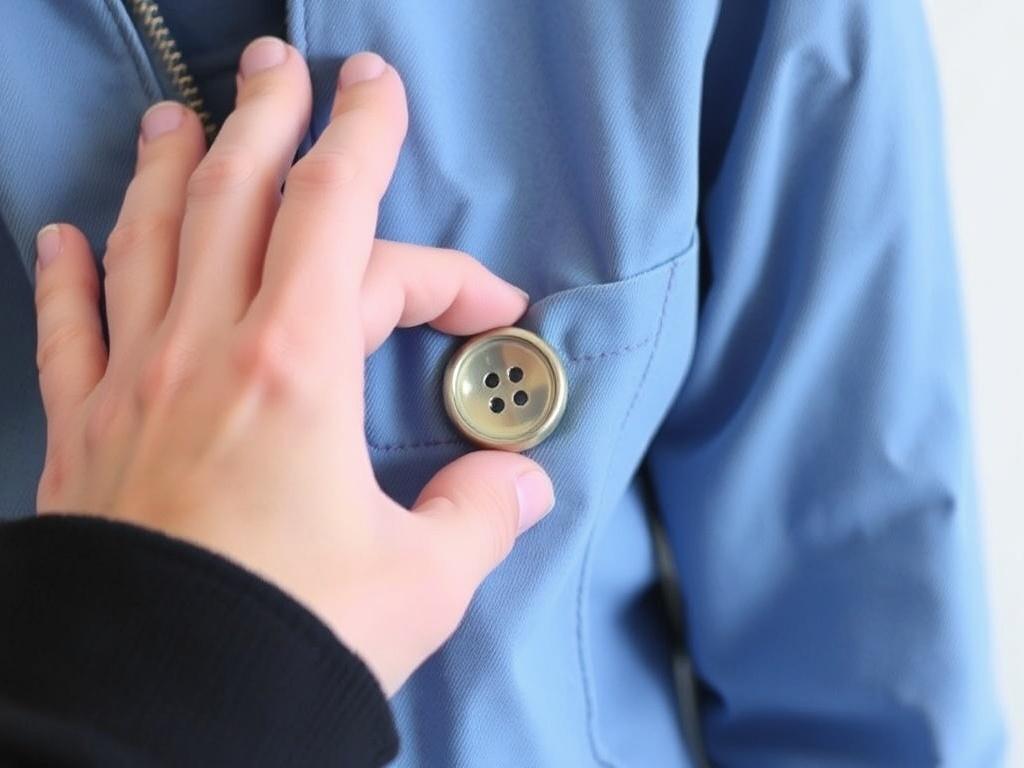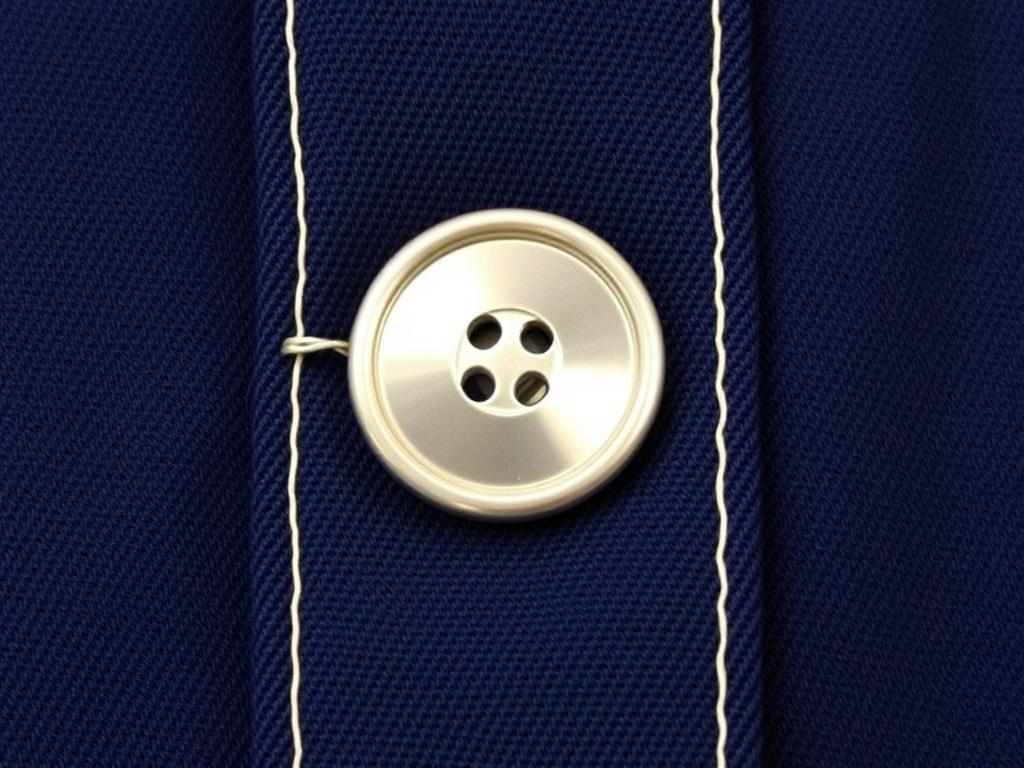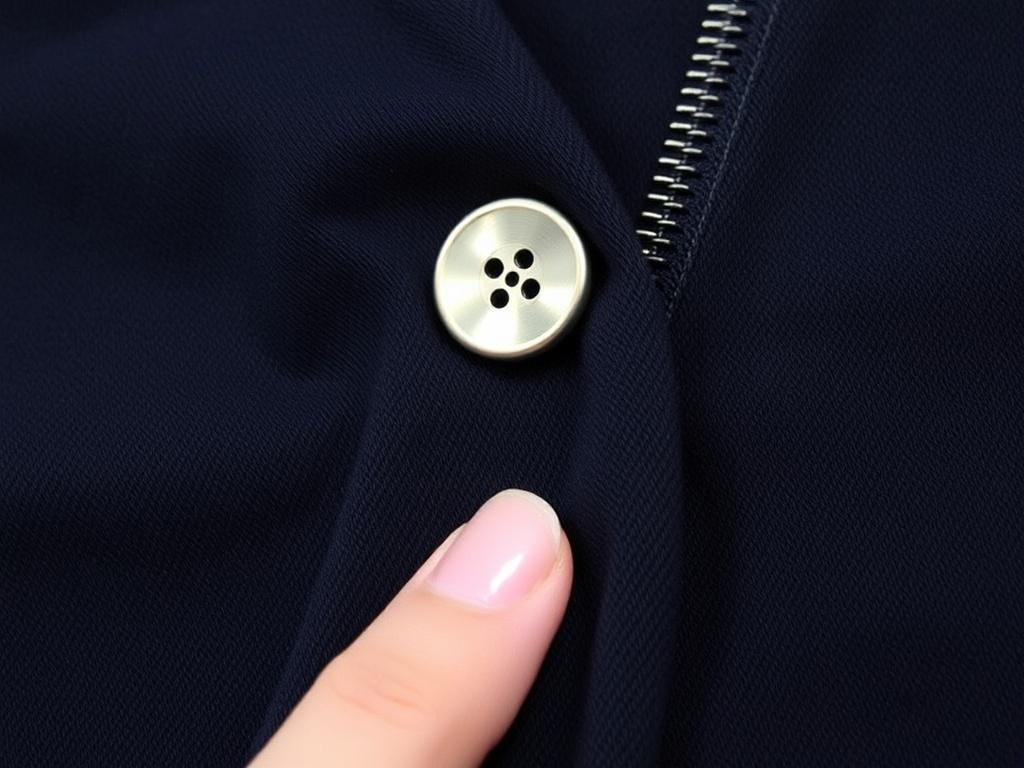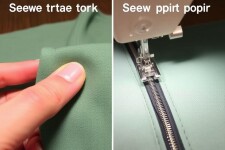If you’ve ever discovered a missing button or a stuck zipper at the worst possible moment, you know that small clothing repairs can feel like a crisis. But the truth is that most of these problems are easy to fix with a little knowledge and a tiny bit of patience. In this article, we’ll walk through everything you need to know about how to repair a garment: from recoudre un bouton to fixing or replacing a zipper. You’ll learn how to do it by hand, the tools you need, tips for matching materials, and when it’s time to call a professional. The goal is to leave you feeling confident that you can save time, money, and a favorite piece of clothing.
Why learning simple clothing repairs matters

There’s something deeply satisfying about rescuing a cherished shirt, dress, or pair of pants instead of tossing it in the bin. Simple repairs like sewing on a button or repairing a zipper extend the life of garments, reduce waste, and save you money. Beyond the practical benefits, knowing how to do these fixes gives you independence: no frantic searches for a repair shop and no delayed outfits because the zipper died right before an important event.
In a world where fast fashion encourages disposal, honing basic sewing skills is also a small but meaningful act of sustainability. When you learn how to mend, you make different choices about consumption and the lifecycle of clothing. Even if you never become a tailor, having a handful of reliable techniques in your toolkit will make everyday living smoother.
Overview of what you’ll learn
This article covers two main areas: recoudre un bouton (sewing on a button) and repairing a zipper (how to diagnose zipper problems, fix the slider, replace stops, and when to replace an entire zipper). For each topic we’ll look at tools and materials, step-by-step instructions, troubleshooting, and advanced tips. We’ll also include tables and lists for quick reference so you can find the right needle, thread, or zipper type without digging through a drawer. Whether you’re a complete beginner or someone who has sewn buttons before, this guide is meant to be friendly, practical, and thorough.
Essential tools and materials for small clothing repairs
Before we begin, let’s gather the things you’ll use most. Having a small dedicated sewing kit will save you time and make repairs feel easy. A compact kit can live in a drawer or travel bag, ready for emergencies.
- Needles: Hand-sewing needles in sizes 7–10 for general repairs, and a few heavy-duty needles for thick fabrics.
- Thread: Polyester thread in neutral colors (black, white, navy), plus a couple of colors that match your most-worn garments. Polyester is strong and flexible; cotton is fine for lightweight clothes.
- Scissors: Small sharp scissors or thread snips for trimming thread, and a pair of fabric scissors for larger cuts.
- Pins and safety pins: For holding fabric in place temporarily. Safety pins are handy for pulling a stuck zipper pull through or holding linings.
- Seam ripper: For removing old stitches or taking apart areas neatly when replacing a zipper.
- Measuring tape and ruler: Useful for spacing buttons or aligning zippers.
- Buttons: Keep a small stash of spare buttons from new clothing, or an inexpensive kit with common sizes and styles.
- Zipper repair kit: Includes replacement sliders and stops for some types of zippers; not all zippers are repairable with a kit, but many are.
- Fabric glue or fray check: Optional, for reinforcing weak fabric or preventing fraying after a repair.
Having these on-hand will reduce the friction of starting a repair. Keep a labeled small box or pouch so you don’t have to hunt for items when time is short.
Fundamentals of hand sewing: basic stitches and tips
Before we jump into specific repairs, it helps to understand a few basic hand stitches. These are the building blocks you’ll use when recoudre un bouton or attaching reinforcements around a zipper.
- Running stitch: A simple in-and-out stitch for basting or holding layers temporarily. Not strong enough for load-bearing repairs but useful for shaping and prepping.
- Backstitch: A very strong stitch that mimics the power of machine stitching. Ideal for seams that will be stressed.
- Whipstitch (overcast stitch): Used to join two edges or to finish raw edges. Good for repairing hems.
- Button stitch: A series of straight stitches that pass through the button’s holes and the fabric. Add a shank with thread spacing for a secure and flexible hold.
Some practical tips:
- Always knot your thread securely at the start and hide the knot by stitching through the fabric rather than on top of it.
- Keep stitches small and even. Smaller stitches are less likely to catch and look neater.
- When sewing on a button, double or triple your thread for strength, especially for heavy-use garments like coats or jeans.
- If the fabric is thin and the button will pull, add a small piece of interfacing or a fabric patch behind to reinforce the area.
Part One — Recoudre un bouton: Step-by-step

Sewing a button back on is one of the most common and satisfying repairs. Done well, the button will look like it belonged there all along. Below is a detailed step-by-step guide for standard sew-through buttons (two- or four-hole). We’ll also cover shank buttons and snap fasteners later.
1. Identify the button type and condition
Before you begin, examine the button and the fabric. Is the original button still available? If so, are the holes intact and is the button in good shape? If the button is missing, try to find a close match. If a perfect match isn’t available, prioritize durability and position—use a similar-sized button and keep the garment balanced by replacing buttons across the row to look uniform.
2. Choose the right needle and thread
Select a needle thin enough to pass through the buttonholes easily but strong enough to go through the fabric. A size 7–9 needle usually works for most garments. Use a strong thread; polyester is a good choice for most fabrics because it is slightly elastic and durable. For heavy garments, consider using two threads together or a heavier topstitching thread.
3. Prepare the area
Trim loose threads and gently flatten or even the fabric around the button area. If the fabric is fragile or frayed, place a small piece of interfacing or a scrap of fabric on the backside of the garment to reinforce the spot where you’ll sew. This is especially important for thin shirts or knit fabrics.
4. Mark the button placement
If you’re replacing a missing button, use the button on the opposite side or the spacing between other buttons as a guide. A measuring tape or ruler can help you align the button consistently. Mark the spot lightly with a fabric pencil, tailors’ chalk, or even a pin.
5. Thread the needle and knot the thread
Cut a length of thread about 18–24 inches long (45–60 cm). Thread it through the needle and knot the end. Thread longer than this can tangle; shorter may be insufficient. A double thread (folded in half) can add strength: knot the two ends together and you’ll have a doubled length of thread to sew with.
6. Sew the button on
For a four-hole button, bring the needle up from the backside through one hole and down through the hole diagonally or straight across, depending on the pattern you prefer. Repeat this motion 6–8 times for a secure hold. For a two-hole button, sew back and forth through the two holes multiple times. Maintain consistent tension: the button should sit securely but not be forced flat against the fabric if it needs a little room to fasten.
7. Create a thread shank if needed
For thicker fabrics or where the button must clear heavy layers (like coat fronts or cuffs), create a small shank so the button sits slightly proud of the fabric. Before finishing the last few stitches, bring the needle through but not tight to the fabric. Wrap the thread several times around the threads between the button and the fabric, then pass through the backside and knot. The wrapped threads form the shank, which gives the button some height.
8. Secure the thread and finish
On the backside of the fabric, pass the needle through a few small stitches in the fabric to lock the thread, then knot securely. Trim the thread close to the knot. For extra security, especially on high-stress areas, add a dab of fray check or a tiny drop of clear fabric glue over the knot; allow it to dry completely before wearing.
9. Test the button
Fasten and unfasten the button several times. If it’s too loose, you can tighten by taking more stitches; if it’s too tight and puckering the fabric, create a slightly larger shank or use fewer wraps around the shank threads. Balance function with appearance.
Variations: Shank buttons, sew-through buttons, and snap fasteners
Different fasteners require slightly different techniques. Here’s how to handle the variations you’ll see commonly.
Sew-through buttons (2-hole and 4-hole)
We covered the basic technique above. Remember that the stitch pattern can be decorative: cross stitches on 4-hole buttons or parallel stitches across pairs of holes. The number of passes determines strength; 6–8 passes are typical for shirts, more for jackets.
Shank buttons
Shank buttons have a little loop or stem on the back instead of holes. To sew a shank button, bring the needle up through the fabric and loop the thread through the shank several times, pulling snug but leaving a small gap between the button and the fabric. Now create a thread shank by wrapping the thread around the stitching between button and fabric a few times before locking off on the backside. Shank buttons are common on coats and knitwear because they allow clearance for thicker layers.
Snap fasteners and press studs
Snaps require different hardware and sometimes a specialized tool for replacement. If a snap falls off, you can sew a replacement snap onto the garment using needle-and-thread snap kits for light use, or use a snap plier/presser for a more durable installation. Metal snaps in heavy-duty garments sometimes need an anvil and setter or a professional tool to install correctly.
Common mistakes when sewing buttons (and how to avoid them)
Even simple tasks can go wrong. Here are typical errors and quick fixes so your repairs look professional.
- Using the wrong thread: Thread too thin will break; too thick won’t pass through buttonholes easily. Use a strong polyester thread for most jobs and double it for heavy garments.
- Tying knots on the front: Don’t knot where it shows. Hide knots on the backside, or pass the needle through fabric to lock threads invisibly.
- Stitching too tightly: This makes the fabric pucker and the button too rigid to fasten over layers. Leave room or create a shank.
- Using the wrong needle: A large, blunt needle can damage fabric; a too-fine needle might break when forced through a heavy button. Match the needle to the task.
Part Two — Repairing a zipper: basics and diagnosis
Zippers are simple in appearance but composed of several parts that can fail: the slider, teeth, stops, and tape. Before you begin any repair, take a moment to diagnose the problem so you can choose the right fix. A little patience here saves a lot of work.
Common zipper problems
- Stuck zipper: It won’t move up or down, often due to fabric caught in the teeth or corrosion/gunk on the slider.
- Slider won’t close the teeth: The slider pulls up, but the zipper opens; teeth don’t mesh correctly.
- Slider came off one or both tracks: The slider slipped off the end of the zipper.
- Missing or damaged teeth: Teeth are broken, bent, or missing, often requiring full zipper replacement if the damage is extensive.
- Stops damaged or gone: The top or bottom stops can break, which can let the slider come off.
Each of these problems has a different fix. Some can be solved at home with basic tools, while others require sewing skills to replace the zipper. We’ll move step-by-step through the most common scenarios.
Types of zippers and how that affects repairs

Not all zippers are created equal. Knowing the type makes a big difference to how you repair them. Here is a quick overview of common types:
| Zipper Type | Description | Repairability |
|---|---|---|
| Metal zipper | Teeth are individual metal pieces attached to the tape; common on jeans and jackets. | Generally durable; the slider can be replaced, but missing teeth on the lower portion may require full replacement. |
| Vislon (molded plastic) | Plastic teeth molded into shape; lightweight and common on outdoor gear and jackets. | Sliders can usually be replaced; broken teeth are more likely to require replacement of the zipper. |
| Coil (nylon) | Continuous coil sewn into the tape, flexible; common on dresses, bags, and many garments. | Often very repairable: sliders and stops can be replaced; coil is flexible so can be eased back into shape sometimes. |
| Invisible zipper | Teeth are concealed within the tape, used in skirts and dresses for a seamless look. | Harder to replace at home; replacement often requires a sewing machine and care to match the invisible finish. |
| Separating zipper | Opens completely at the bottom (coats/jackets) and uses a pin-and-box system for alignment. | Repairable but more complex; slider replacement and stop adjustments are common fixes. |
Knowing which zipper you have will guide whether a small repair kit will help or if you should plan to replace the zipper entirely.
Tools and materials for zipper repair
Here’s a more focused toolkit for zipper fixes. It includes items you may not use for buttons but that are essential for getting a zipper working again.
- Pliers (needle-nose): For crimping stops and squeezing sliders back into shape.
- Zipper repair kit: Often includes replacement sliders, stops, and sometimes a tool for insertion.
- Seam ripper: Needed for removing a zipper when it must be replaced.
- Replacement zipper (full-length or by-the-inch): Buy a matching zipper if you plan to replace the old one.
- Fabric marker and pins or clips: Useful for aligning a new zipper before sewing.
- Sewing machine (optional but faster) or heavy-duty hand sewing needles for reattaching a zipper.
Fix for a stuck zipper
A stuck zipper often occurs when fabric gets caught in the teeth or when the slider is dirty or corroded. Here’s a calm, step-by-step fix:
- Inspect the zipper closely. If fabric is trapped, gently work the fabric free with your fingers or a blunt object like a wooden toothpick. Be careful not to tear the fabric.
- If the slider seems tight, try lubricating it. Use a bar of soap, graphite from a pencil, or a drop of sewing machine oil applied sparingly to the slider and teeth. Work the zipper up and down until it moves smoothly.
- If the fabric is stubborn, apply a tiny amount of lubricant around the trapped area and pull slowly while easing the fabric out. Avoid using oils on delicate fabrics that might stain.
- If the slider is damaged or misaligned, proceed to slider repair or replacement (next sections).
Patience is key here. Rushing or yanking can make the problem worse by tearing the fabric or bending teeth.
Fix for slider not closing the teeth (loose slider)
When the slider no longer closes the teeth — the zipper separates behind the slider — the slider is usually worn and needs adjusting or replacement.
- Try to gently squeeze the slider together. Use needle-nose pliers to pinch the sides of the slider slightly so it grips the teeth as it passes. Apply light pressure and test often. Too much force can break the slider.
- If that doesn’t solve it, replace the slider. Use a zipper repair kit or salvage a slider from an old zipper of the same size and type. Make sure you have the correct replacement for coil vs. metal zippers.
- To replace the slider, remove the top stop or the bottom stop depending on whether the slider is on a closed-end or separating zipper, slide the old slider off, and slide the new one on. Replace the stop by crimping a new stop in place or sewing a new top/bottom stop.
- Test several times to ensure the slider closes the teeth properly and does not come off.
Replacing the slider often restores a zipper’s function with minimal sewing required.
What to do when the slider has come off the tracks
If the slider has jumped off one side of the zipper or come completely off, you’ll need to reinsert it carefully.
- If the slider has jumped off the top of a closed-end zipper, remove the top stop with pliers or a seam ripper. Slide the slider back onto both sides of the zipper, making sure the teeth are aligned. Replace the top stop or make a new one by sewing or crimping a metal stop.
- For a separating zipper (like a coat), you’ll need to reinsert the pin into the box. Fit the bottom pin into the box and then feed the tape into the slider so it engages properly. This can take a bit of fiddling to get both sides aligned.
- If the slider came off the bottom of a closed-end zipper, you can sometimes reinsert it by separating the bottom stop, slipping the slider back on, and reinstalling the stop.
Be careful when removing or adding stops; a poorly installed stop can allow the slider to escape again.
Replacing a zipper: when it’s necessary and how to do it
Sometimes the damage is beyond a quick fix: missing teeth, severely damaged tape, or a zipper that has corroded. In those cases you’ll need to replace the zipper. Replacing a zipper is a sewing project that ranges from moderate to advanced depending on the garment and zipper type, but with patience it’s within reach for many DIYers.
When to replace a zipper
- Large sections of missing or broken teeth.
- Severe corrosion or rust on metal zippers.
- Damaged or disintegrated zipper tape that can’t be reinforced.
- Invisible zippers that have lost teeth or are otherwise compromised; these often require replacement to maintain the invisible look.
How to replace a zipper (general method)
Below is a general workflow. Specifics will vary for different garments and zipper types.
- Purchase a replacement zipper of the same type and length. If you can’t find the exact length, buy a longer zipper and shorten it at the top by installing a new stop.
- Remove the old zipper carefully with a seam ripper. Preserve the fabric and interfacing as much as possible by removing only the stitches and not cutting the fabric.
- Press the seam allowances flat and pin or clip the new zipper in place. Make sure the teeth are centered and the zipper matches the garment’s original alignment.
- Sew the zipper in place using a zipper foot on your sewing machine for a neat result. If sewing by hand, use a strong backstitch close to the teeth. Start sewing from the top and work down on each side, keeping the stitching even.
- Reinforce the top and bottom with a few extra stitches or a small bar tack to prevent the zipper from ripping out under stress.
- Test the zipper multiple times to ensure smooth operation and alignment.
Replacing a zipper on a coat or jeans is more work than on a skirt, but the same principles apply. Invisible zippers require special care during installation because the teeth are hidden; follow the zipper’s instructions for a clean finish.
Repairing a zipper on jeans (special considerations)
Jean zippers are typically metal and attached to thick denim and heavy zipper tape. These zippers are very durable, but when they fail, repairs must account for heavy-duty fabrics and frequent use.
- Use a heavy-duty replacement zipper and a robust slider designed for metal teeth.
- When replacing, remove only the minimum necessary stitches to extract the old zipper.
- Machine sewing is strongly recommended for strength; use a strong thread and a needle designed for denim.
- Reinforce the area where the zipper meets the waistband because it bears stress during wear.
If you’re unsure about aligning a jeans zipper or doubt your sewing machine’s capacity for heavy denim, a tailor or repair shop can usually do a reliable job quickly and affordably.
Quick fixes and hacks for temporary zipper rescue
Sometimes you need a fast, temporary solution — say, when you’re traveling or in a hurry. Here are a few quick hacks that can buy you time until you can do a proper repair.
- Key ring or paper clip as zipper pull: If the pull tab breaks off, loop a small key ring, paper clip, or strong string through the slider to create a makeshift pull.
- Use pliers to squeeze slider: Temporarily tighten a loose slider by gently squeezing it with pliers. Don’t overdo it, but a small pinch can restore function for a while.
- Safety pin as temporary stop: If a slider keeps coming off the bottom, you can insert a safety pin through the tape just below the slider as a temporary stop. This is obviously a short-term solution.
- Replace slider with pliers and a spare slider: Keep a spare slider in a small kit to swap in when needed. Many sliders can be changed without removing the whole zipper.
These tricks are handy but remember they’re temporary. A proper repair or replacement is usually necessary for long-term wear.
Invisible zipper replacement: special notes
Invisible zippers are sewn with the teeth hidden behind the seam. They look elegant but can be tricky to install. If you need to replace an invisible zipper, consider these tips:
- Use an invisible zipper foot for your sewing machine. This foot helps stitch very close to the coil so the zipper stays invisible.
- When basting the zipper, keep the seam allowances flat and use a lot of pins or clips to prevent shifting.
- Practice on a scrap piece of fabric if you’ve never installed an invisible zipper before. The technique can feel counterintuitive at first.
- If the garment is valuable or the zipper is critical to the fit (like on a wedding dress), it might be worth paying a professional to ensure a flawless finish.
Troubleshooting zipper repairs: common scenarios
Even with care, things can go wrong. Here’s how to diagnose a few persistent problems and what to do next.
Zipper keeps separating after repair
If the zipper separates again after you’ve tightened or replaced the slider, it’s often because the slider doesn’t match the zipper size or type. Verify that your replacement slider is the correct width and designed for the zipper material (coil vs. metal). If it is, check that the teeth are not misaligned or damaged. Replace the slider with a proper fit and test several times.
Stitching rips out where zipper attaches
Weak stitching or thin fabric can give way at stress points. When replacing the zipper, use a stronger thread and reinforce the seam with a small patch or apply interfacing behind the zipper tape. Add bar tacks or small rectangular stitches at the top and bottom where the zipper experiences the most force.
Zipper is noisy or grinds
Noise is often due to dirt, grit, or corrosion. Clean the zipper with a toothbrush and mild soap, then apply a lubricant like soap, graphite, or a small amount of petroleum jelly for a metal zipper. For plastic zippers, avoid petroleum-based lubricants that can degrade the plastic; use soap or a silicone-based lubricant instead.
Repairing delicate fabrics and special-care garments
Delicate fabrics like silk, chiffon, or lace require a gentle touch. When you need to repair a button or zipper on a delicate item, use smaller needles, fine thread, and take extra care not to create puckers or visible alterations.
- Put a piece of tissue paper under the fabric to protect it when using a seam ripper; the tissue prevents accidental holes.
- Use a small hand needle (size 9–10) and fine polyester or silk thread for invisible repairs.
- Consider using a fray-check product if the fabric tends to ravel around the repair area, but test on a hidden area first to ensure no discoloration.
If the garment has special finishes or embellishments, a professional may be the safest choice to maintain the original look and structure.
Matching buttons and zippers: aesthetic and functional choices
When you replace a button or zipper, think about both appearance and function. For example, a metal zipper might be more durable but heavier and more visible than a nylon coil. Similarly, a visually matching button improves the garment’s look, while a bead or decorative button might require different sewing techniques or a different shank.
If you cannot find a perfect match, try to keep the replacements consistent. If you replace a button on a row, consider replacing the entire row of buttons so they match exactly in color and wear. For zippers, choose a color that blends into the garment or a complementary tone for a contrasting, deliberate look.
Care and maintenance to prevent future problems
Once you’ve repaired a garment, some care will help avoid repeats of the same issue. Regular maintenance keeps buttons and zippers functioning longer.
- Inspect fastenings periodically. Tighten or replace loose buttons before they fall off completely.
- Keep zippers clean. Brush off dirt and debris after wearing, especially for outerwear used outdoors.
- Lubricate zippers occasionally on heavy-use items like boots and coats using appropriate, fabric-safe lubricants.
- Store garments properly. Hanging jackets and coats reduces stress on zippers and keeps buttons aligned.
Table of needle and thread choices for common repairs
| Repair Type | Needle Size | Thread Type | Notes |
|---|---|---|---|
| Lightweight fabrics (silk, chiffon) | 9–10 (fine) | Fine polyester or silk thread | Use short stitches and reinforce with interfacing if needed |
| General garment buttons (shirts, blouses) | 7–9 | Polyester thread (single or doubled) | Create a small shank for thickness when needed |
| Heavier fabrics (denim, canvas) | 3–5 (heavy-duty) | Topstitching thread or doubled polyester | Use a heavy-duty needle and consider a machine for strength |
| Zipper reattachment (general) | 7–5 depending on fabric | Polyester or heavy thread | Use a zipper foot for machine sewing; backstitch to secure |
Preparing your own travel repair kit
A small, portable repair kit is useful for trips, work, or emergencies. Here’s what to include in a compact pouch that fits in a handbag or suitcase:
- Assorted needles (sizes 7–10)
- Small spool of polyester thread in black and white (and one neutral color)
- Small scissors or thread snips
- Assortment of buttons (four-hole and two-hole) and a couple of shank-style buttons
- Spare zipper slider and a few small top/bottom stops
- Small seam ripper
- A few safety pins and a small sewing awl
- Mini fabric adhesive or fray check
With this kit, you’ll be able to handle most quick repairs on the go and avoid being stuck with a ruined outfit during travel.
When to see a professional tailor or seamstress
Many repairs are best done at home, but some situations call for professional help. Consider visiting a tailor if:
- The garment is expensive or sentimental and you fear causing irreparable damage.
- The zipper is on structured garments like tailored coats or leather items requiring specialized sewing machines.
- Invisible zippers or complex lining installations are necessary to match the original finish.
- Large sections of fabric require replacement or extensive restitching that you don’t have the tools to do cleanly.
Most tailors can replace a zipper quickly and at a modest cost, and they can guarantee a finish that maintains your garment’s value and fit.
Troubleshooting checklist: quick decision guide
Use this checklist to decide the right course of action quickly when faced with a broken button or zipper:
- Is the button present and intact? If yes, recoudre un bouton. If no, can you find a similar button? If not, replace the whole row or use a close match.
- Is the zipper slider stuck or dirty? Try cleaning and lubricating first.
- Does the slider fail to close the teeth? Try squeezing slightly with pliers; if that fails, replace the slider.
- Are teeth missing or broken? Plan to replace the zipper if there’s significant damage.
- Is the garment delicate or valuable? Consider professional help for complicated fixes.
Advanced tips and techniques for neat repairs
If you want your repairs to look as invisible and professional as possible, here are a few advanced tips:
- When replacing a zipper on a garment with a patterned fabric, match the pattern alignment carefully. Remove the old zipper with minimal disturbance to the seam so the pattern stays aligned when you install the new one.
- Use thread that matches the garment exactly in color and sheen. A slightly glossy polyester thread on a matte fabric can look off.
- When sewing buttons on knit fabrics, attach them through a small rectangular patch of stabilizing fabric to prevent stretching and holes.
- Press the area gently with an iron (using the proper heat setting) after sewing a button or reinstalling a zipper to flatten stitches and set the fabric neatly.
- For professional-looking zipper installations, sew a clean basting line first, check operation, then sew the final stitch close to the teeth, removing the basting afterward.
Frequently asked questions (FAQ)
How long does it take to sew on a button?
A simple button can take as little as five to ten minutes for a practiced hand. If you add reinforcement or work on a tricky fabric, it might take 15–30 minutes. Practice speeds things up quickly.
Can all zippers be repaired without replacing them?
Many zipper issues—stuck sliders, loose sliders, missing stops—can be fixed with replacement parts or adjustments. However, missing teeth or damaged tape usually mean the zipper must be replaced.
What’s the best way to remove a broken zipper?
Use a seam ripper to carefully remove the stitches holding the zipper in place. Work slowly to avoid cutting the fabric. Keep the old zipper as a template for purchasing a new one.
Is it better to sew a zipper by hand or machine?
Machine sewing is typically stronger and neater for most zippers, especially heavy ones. However, hand sewing can be used for small repairs or if you lack a machine. Use backstitches for strength when sewing by hand.
How do I prevent buttons from falling off again?
Reinforce the area with interfacing or a fabric patch if the fabric is thin. Use double thread and make multiple passes when sewing. Add a small backstitch or bar tack on the backside for extra security.
Summary and final encouragement
Repairing a garment—whether that means recoudre un bouton or fixing a zipper—doesn’t have to be intimidating. With a few basic tools and a little practice, you can handle most common problems quickly and neatly. Start with simple button repairs to build confidence, then try basic zipper fixes like freeing a stuck zipper or replacing a slider. When more complex issues arise, such as missing teeth or extensive damage, replacing the zipper or seeking professional help is the best route.
Remember, mending is both practical and meaningful. It saves money, reduces waste, and connects you to the things you wear. Keep a small kit on hand, practice these techniques, and you’ll soon find that these once-daunting tasks become easy rituals that extend the lives of your favorite garments. Happy mending!
Helpful resources and suggested next steps
If you want to practice and expand your skills, here are a few next steps you can take:
- Watch short tutorial videos that demonstrate hand stitches and zipper repairs, pausing and practicing along with the video.
- Buy a basic zipper repair kit and experiment with replacing sliders on old jackets you don’t mind practicing on.
- Create a dedicated sewing kit and keep it in a convenient spot, so you’ll be ready the next time a button goes missing or a zipper misbehaves.
- Consider a beginner sewing class (local or online) to build confidence with both hand and machine techniques.
By taking small steps and practicing regularly, you’ll soon be the person your friends call when a fast fix is needed. And you’ll keep more clothes in circulation longer, which is a small but powerful way to be kinder to the planet.
Quick reference: checklist for common repairs
| Problem | Immediate action | Long-term fix |
|---|---|---|
| Missing button | Find a matching button or pick the closest size; check opposite button for spacing | Recoudre un bouton using reinforced stitching; replace row if appearance matters |
| Stuck zipper | Free any caught fabric; lubricate slider gently | Clean and replace slider if worn; replace zipper if teeth are damaged |
| Slider won’t close teeth | Tighten with pliers slightly | Replace slider with exact match |
| Broken zipper teeth | Limit use to one side if possible; avoid forcing slider | Replace the zipper |
| Loose stitching at zipper | Hand-stitch a temporary reinforcement | Re-sew securely with machine and reinforcement patch |
Parting thought
Every small repair is a chance to learn and to value the things we own a little more. The next time you see a button missing or a zipper misbehaving, take a deep breath, gather your kit, and try the steps in this guide. Most problems are fixable, and the satisfaction of restoring a garment is well worth the effort.
Now that you’ve read through the guide, pick a simple project — maybe a spare shirt with a loose button — and give it a try. You’ll be surprised how quickly your confidence grows, and how many garments you can bring back to life with a few stitches and a steady hand. Bonne réparation — and happy sewing!



